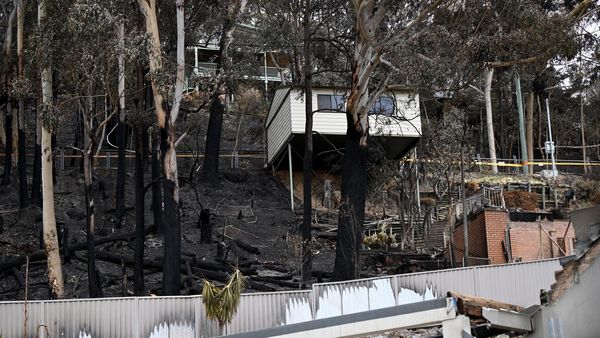
The premier of New South Wales, Chris Minns, has said he is open to a parliamentary inquiry into Ivan Milat, after a state MP questioned whether the backpacker murderer could be responsible for many more deaths.
Legalise Cannabis party MLC Jeremy Buckingham is pursuing whether Milat was responsible for dozens of unsolved murders throughout Australia, mainly of young women.
In an estimates committee hearing in NSW parliament, Buckingham presented the premier with two images: a photo of a young Milat alongside a police sketch of the suspect in the Wanda beach murders, which occurred in 1965 in southern Sydney.
Minns agreed there was a likeness. “Yes, I am concerned they are incredibly similar,” he said.
Minns said he would first seek to meet the families of victims “to understand … their circumstances and their anguish associated with the loss of their loved one”.
But he said he would not rule an inquiry out, saying that such a move “may be the necessary next step, given the scale of some of the things”.
The Wanda beach murders were the unsolved killings of two 15-year-old girls, Marianne Schmidt and Christine Sharrock, who were found dead in the sand dunes near Cronulla in Sydney on 12 January 1965, decades before the backpacker murders took place.
Milat was convicted in 1996 of the murders of seven backpackers whose bodies were found in the Belanglo State Forest, in the NSW southern highlands. He was sentenced to life in prison and died in jail in 2019.
Melbourne couple Deborah Everist and James Gibson, German travellers Simone Schmidl, Anja Habschied and Gabor Neugebauer, and Britons Joanne Walters and Caroline Clarke were all killed between 1989 and 1992 after Milat picked them up hitchhiking.
The Belanglo murders were among the inspirations for the 2005 horror film Wolf Creek, about a gun-loving outback murderer who terrorises three backpackers.
Buckingham has been seeking police files on investigations into Milat using parliamentary processes to demand documents, believing there are dozens of unsolved murders that Milat may have committed.
On Wednesday, Buckingham was blocked from receiving the files because the government said there are still ongoing criminal investigations.
However Minns said he would consider Buckingham’s request to release Milat’s employment records with government agencies including the Department of Main Roads.
As a road worker, Milat moved around NSW. He also fled to Queensland and Victoria, before flying to New Zealand.
Police maintain that Milat could have been involved in more murders than the seven for which he was convicted, with police questioning him over a number of other cases until his death.
Investigations into the unsolved deaths and disappearances of young people were started in 1993 by Task Force Air by comparing Milat’s known criminal and victim profile, and his known modus operandi, to cold cases.
The victim list ran to 56 people, including many hitchhikers who disappeared.







